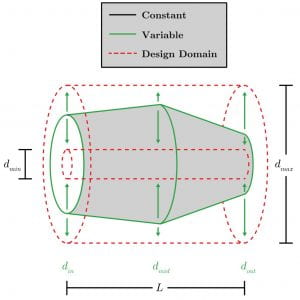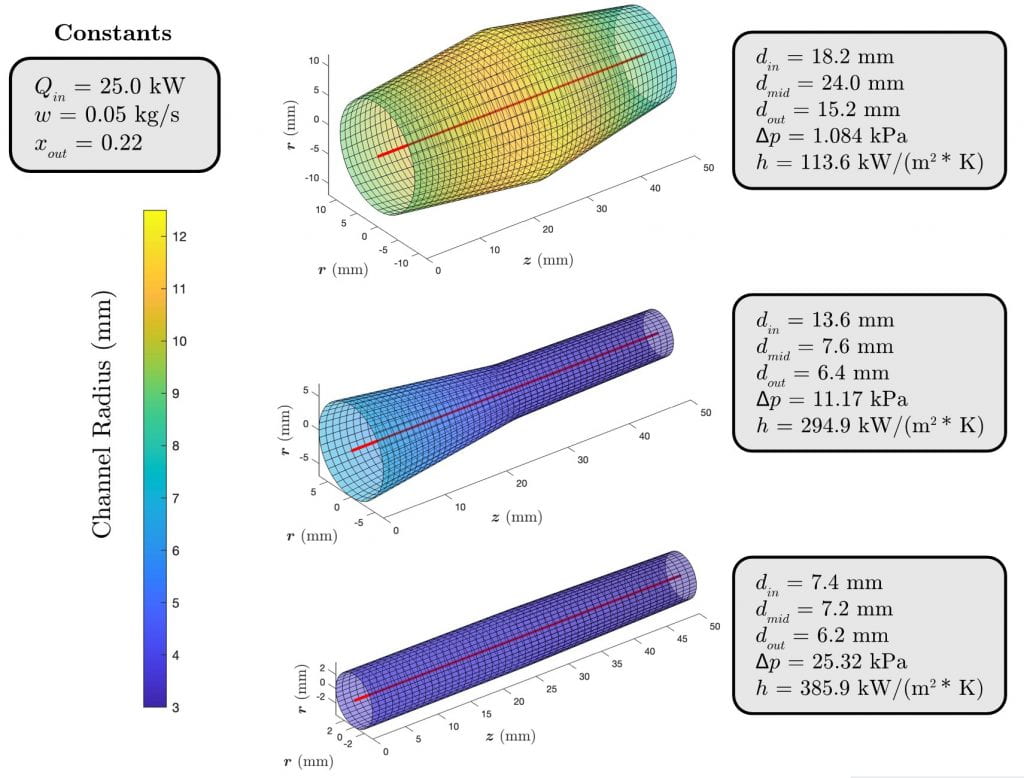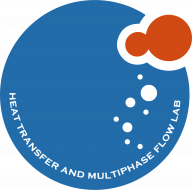 Additive and other advanced manufacturing technologies have made it possible to design organic, non-traditional thermal management structures, which will enable higher cooling performance in smaller form factors. One difficulty that comes from this design freedom is dealing with the infinitely-variable possibilities to determine optimal designs. Two-phase cooling technologies in particular, which are extremely efficient at dissipating heat but are plagued with flow complexities and high pumping power, have great potential to benefit from additional design freedom and design optimization.
Additive and other advanced manufacturing technologies have made it possible to design organic, non-traditional thermal management structures, which will enable higher cooling performance in smaller form factors. One difficulty that comes from this design freedom is dealing with the infinitely-variable possibilities to determine optimal designs. Two-phase cooling technologies in particular, which are extremely efficient at dissipating heat but are plagued with flow complexities and high pumping power, have great potential to benefit from additional design freedom and design optimization.
We are using two-phase flow and heat transfer models with genetic algorithms to automate and optimize the design of simple two-phase flow channels. Our design space domain is shown schematically above. The genetic algorithm allows us to quickly automate the design process and arrive at the Pareto-optimal design set, which can be used by engineers to select the optimal design best suited to their application. As examples, three pareto-optimal designs are shown below. Low pressure drop is obtained by the top design, where large diameters and expansions allow ample room for vapor generation. Higher average heat transfer coefficients are obtained by the lower designs, where lower surface area and higher heat fluxes result in higher boiling heat transfer coefficients but more pressure drop as vapor is constrained by the narrow flow path.


